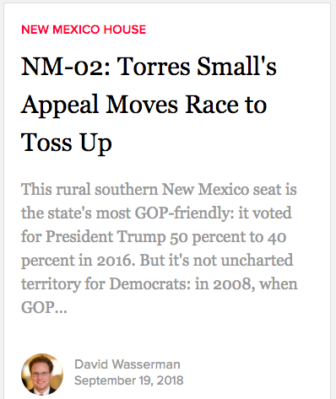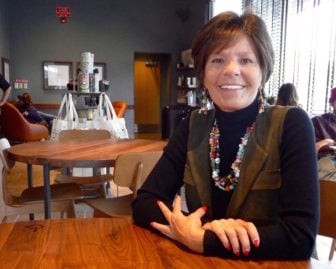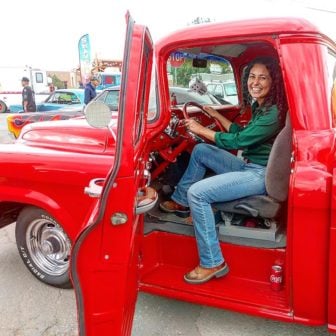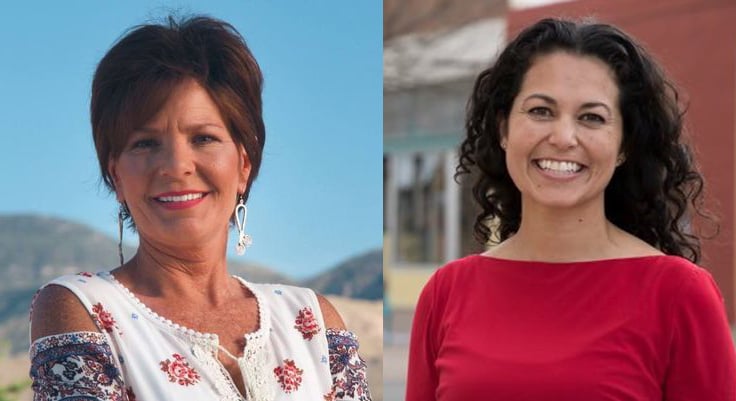It’s just over two weeks before Election Day in one of the hottest races in the country — the 2nd Congressional District covering the southern half of New Mexico.
Attack TV ads and nasty mailers have bombarded the air waves and stuffed mailboxes — and in the age of social media, clogged the news feeds of fired-up voters – all paid for by millions in campaign cash, national Democratic and Republican party support and spending from dark money groups.
And nothing points to the onslaught easing before Election Day.
A 2nd Congressional District election is usually a quiet affair ending in a forgone conclusion. Voters have reliably sent conservative Republican Steve Pearce to Washington since 2003 except for a two-year hiatus when he ran for Senate. Not this year. With Pearce running for governor, the district is one of 75 seats considered vulnerable by the nonpartisan Cook Political Report. The outcome of these contests will determine control of the U.S. House of Representatives.
At the center of this crucible are two women who don’t want you to see them sweat.
On Friday, after wrangling for scarce blocks of time on calendars jammed with appearances and campaigning, the candidates agreed to talk about their marathons across the district — the fifth largest in the country, stretching from the southern part of Albuquerque in the north to Sunland Park in the south and from Arizona to Texas. Neither had had much time to spend at home, but both were upbeat and energetic, and optimistic about their chances.
Republican state Rep. Yvette Herrell was up early after a night of campaigning, and fueling up at the Starbucks on Teshor in Las Cruces before another two-hour drive.
“I am home less than I am on the road. It’s such a beautiful state, so I do appreciate that, but it’s a long ways in between towns sometimes,” says Herrell, cupping her hands around a grande drink as coffee grinders whirred and espresso machines sputtered in the background. “It would be very easy to get caught up in the rhetoric, and all the pressure, but for me I know that the important issue is winning the race, and so I just stay focused on what I need to do, stay focused on meeting the voters.”
Xochitl Torres Small, a lawyer specializing in water issues born and raised in Las Cruces, slipped in a conversation by phone in between two campaign events. That followed two days of visits with Pueblo leaders.
“This is one of the most challenging things I’ve ever done, but it’s also been the most energizing and most rewarding — to be able to get the chance to travel this enormous district to talk about our shared dreams and how we can achieve them is exciting.”
It’s too early to predict a winner. There are too many uncertainties. But whoever wins, one thing is certain: Voters in the 2nd Congressional District will send a woman to represent them in Washington for the first time, during an election cycle being referred to as the Year of the Woman.
Both women downplayed the effects of the #MeToo movement and Year of the Woman rhetoric in their decisions to run. Running for Congress was something she had been working toward for a long time, Herrell said, using eight years in the state Legislature to build relationships and experience. For Torres Small, the decision was all about community and finding a way to serve the place she had grown up in and returned to after college, she said.
New Mexico pollster Brian Sanderoff, of Research and Polling Inc., has observed the race from Albuquerque for months; his poll last month found Herrell leading Torres Small by seven points. But that was more than five weeks ago and a month can be an eternity in politics. These days he’s experiencing firsthand the national interest the race is generating.
“I spent a half an hour on the phone with the New York Times this morning, a long, in-depth interview with the New Yorker magazine; people are calling from all over the nation talking about the race, and again, the reason it’s become important is because of its national implications, not because they care about Las Cruces or Hobbs, New Mexico,” Sanderoff said.

The respected Cook Political Report rated the 2nd Congressional District race a toss up last month
A competitive race in the 2nd Congressional District “is highly unusual,” let alone a “very competitive one,” he said. “It’s only been competitive one time in over 40 years.”
Nationwide interest in the race and its rare chance to flip to Democratic control has meant a flood of cash for Torres Small. In the most recent campaign finance filing on Oct. 15, she reported raising $1,883,667, and had more than $1 million to spend in the final weeks of the campaign. That doesn’t include the $1.1 million the Democratic Congressional Campaign Committee is spending to batter her opponent.
Herrell raised less than a third of that in the same period, $564,027, and had just $419,124 in cash on hand. But she’s also getting help from her national party, with the Republican National Campaign Committee spending about $1.2 million against Torres Small, among other outside spending by political action committees.
That kind of money buys an awful lot of attack ads. It’s something both women lament but understand goes with the territory in such a high-stakes race.
Torres Small said the negative campaigning came up even from government students in Las Cruces.
“That question hit me in a different way talking to high school students, and what we all go through when we take on big things, when you step up and put yourself in the limelight. But, you know, people are going to say things that are wrong, that are untrue,” she said. “What I’m most proud of, in terms of the negativity, is that the only positive thing on the airwaves in terms of the campaign are my ads, my vision for leadership and the future. I’m talking about solutions.”
Herrell said she had mentally prepared herself for a difficult campaign, but worried about the effects of attack ads against her on her parents and family. Still, she had no qualms about her own campaign ads.
“The difference is our ads are data-based. The one’s we’re seeing coming out of the Small campaign are not. There’s a huge difference. In fact, they’re the same attack ads that came at me in the primary. We shut those down, there was no basis,” she said.
Despite the national attention and strategic help from the national parties, the candidates said they were working hard to keep this a campaign about things they believed southern New Mexico voters cared about and wanted fixed.
Hot Button Issues
Beyond the cartoonish distinctions people can draw from sharp-elbowed ads in any high-stakes race, the two women do differ on the direction the country is headed and on hot-button issues.

Sylvia Ulloa
New Mexico State Rep. and 2018 candidate for U.S. Congress Yvette Herrell.
Even though President Trump’s popularity has dropped sharply in New Mexico, Herrell remained strongly supportive of the president and what he has achieved over the past two years, she said, including the tax cuts and the renegotiated NAFTA trade agreement.
“It’s working. The dairy industry saw a huge uptick in the price for a gallon of milk,” Herrell said. “So I think the excitement in seeing these agreements being redone and putting America on a level playing with our trade partners is huge.”
Herrell elaborated her views on border security and the Deferred Action for Childhood Arrivals program, other hot button Trump issues. DACA needs reform, she said, because it had never been meant to be a pathway to citizenship. The application process needs to be streamlined, and there should be a way to legalize people who had been brought to the United States illegally as children — however, she said she didn’t believe they should go to the front of the line over other immigrants who had sought to come to the United States legally.
She has supported President Trump’s call for a border wall but brings a more nuanced view of a debate that is all too easy to caricature.
“It’s not just people coming across the border, the checkpoint,” she said. “It’s also the cattle that are coming back and forth. It’s the drugs that are coming through our farms and ranches down there, it’s drug and human trafficking. … Having that voice, understanding the challenges, working with colleagues, working with constituents, that’s where we’ll find the solutions that will work for New Mexicans.”
Besides the wall, some options she named were increased National Guard presence and ICE agents, as well as technology.

Torres Small Facebook campaign page.
New Mexico Democrat Xochitl Torres Small on the 2018 campaign trail for U.S. Congress.
Unsurprisingly, Torres Small has a different perspective on those national policies that hit home in southern New Mexico.
The Democrat said she was pleased that a new agreement had been made with Mexico and Canada because as a net exporter, trade was important to New Mexico. But she said the year it took to negotiate and the uncertainty it caused was disruptive. One of her priorities in Congress would be to get the deal signed quickly.
“Being a net exporter, with so much of our economy being about trade, it hurt us,” she said. “In the future, when we look at our trade policy, certainty and ability to plan is fundamental.”
When it comes to immigration, what Torres Small wants to see is a “clear and moral immigration system.”
Using the Dreamers as bargaining chips in a larger immigration debate is wrong, she said. She supports a pathway to citizenship for young adults in the DACA program.
Torres Small said immigration laws should be enforced, but it had to be done smartly — and not with a border wall.
“We have to invest in technology, and skilled and accountable law enforcement — and we’ve done that,” she said. “We have infrastructure that’s based on situations on the ground. That’s why we have tall pedestrian barriers in place, but that’s see-through so Border Patrol agents can see potential threats. Car barriers where necessary. When you have a desert that takes more than three days to cross, what you really need there is technology to identify people who have crossed without identification.”
She also wants to invest in the state’s ports of entry to support additional trade with Mexico, and to work toward a robust work visa system that would help farmers, and advocates a skills-based immigration system that prioritizes family reunification. “We all know people do better when surrounded by a network of support.”
Voter excitement
Both Herrell and Torres Small were gratified to see a surge of excitement in early voting. Doña Ana County led the state in early voting until Saturday, when Bernalillo County — three times the size of its southern neighbor — surged ahead with more than 19,600 ballots cast after the first day of early in-person countywide voting started, to Doña Ana County’s total of 9,647 ballots cast.
“Voters are paying attention. They’re looking at the bigger picture. I think that’s pushing people to the polls,” Herrell said. “I just encourage everyone to vote because it’s such a privilege.”
While much of recent attention has been about the high turnout in Doña Ana County, Herrell’s home county of Otero has also been seeing a lot of excitement.
Sanderoff, the pollster, approached the numbers with caution. The early signs from Doña Ana County looked good for Democrats, but the real test would be who showed up on Election Day. The most enthusiastic voters turn up to vote early, and while this is expected to be an extraordinary midterm, it’s still not a presidential election year.
“This race will be determined by turnout. If it’s the same old, same old, then Xochitl Torres Small has trouble,” Sanderoff said. It will be up to Las Cruces to “flex its muscle for the first time politically” as the second largest city in the state, and the largest city in the district, he said, if the Democrats have any chance of turning the 2nd Congressional District blue. “Doña Ana County is a sleeping giant.”
In the meanwhile, however, Xochitl Torres Small and Yvette Herrell need to get back on the road.
